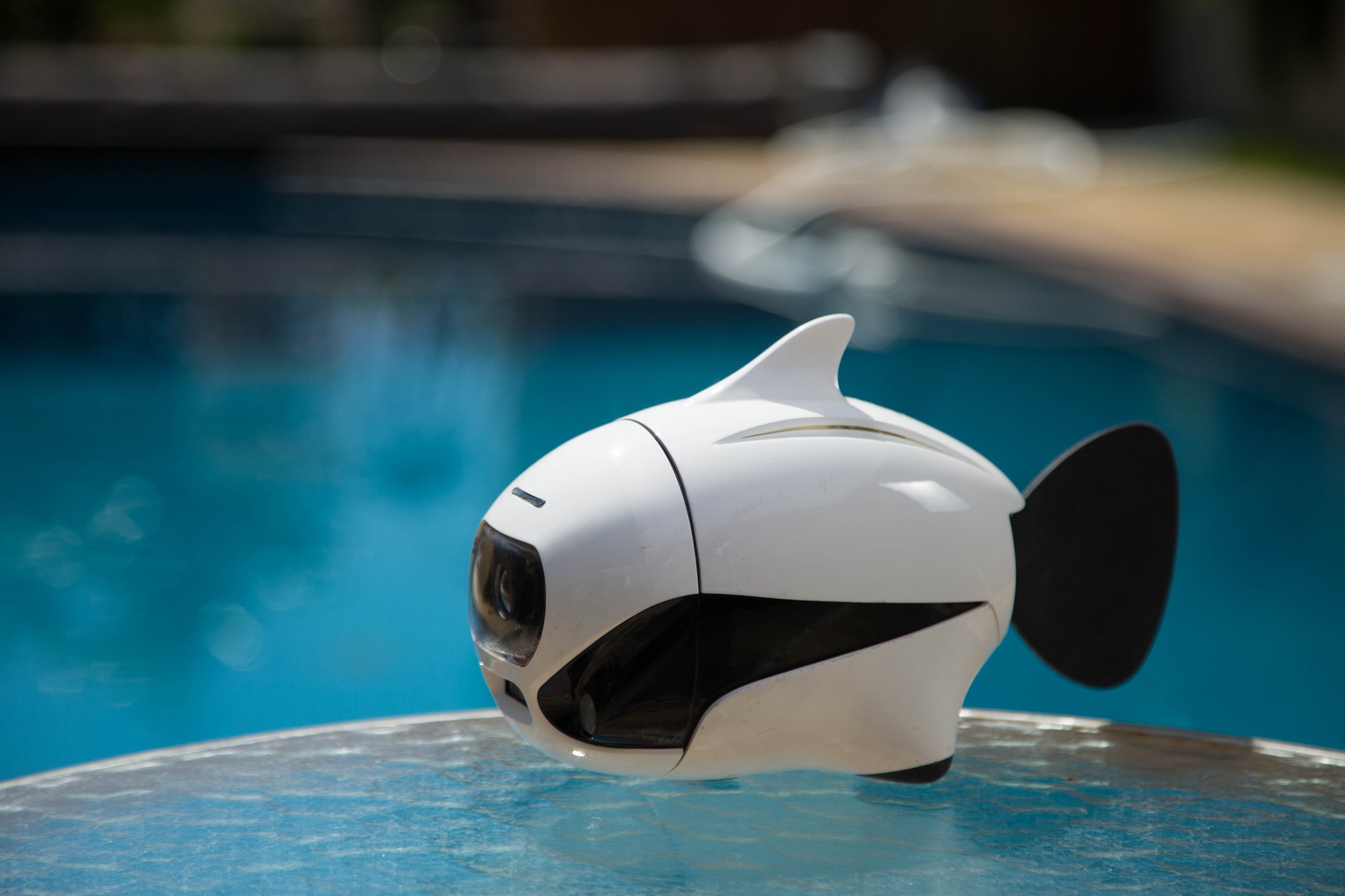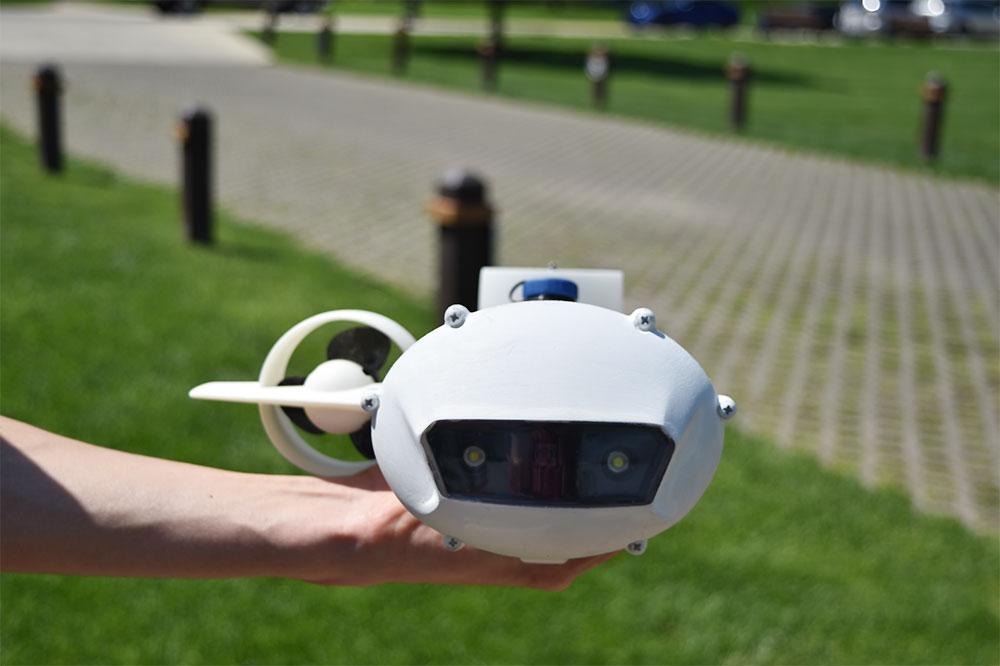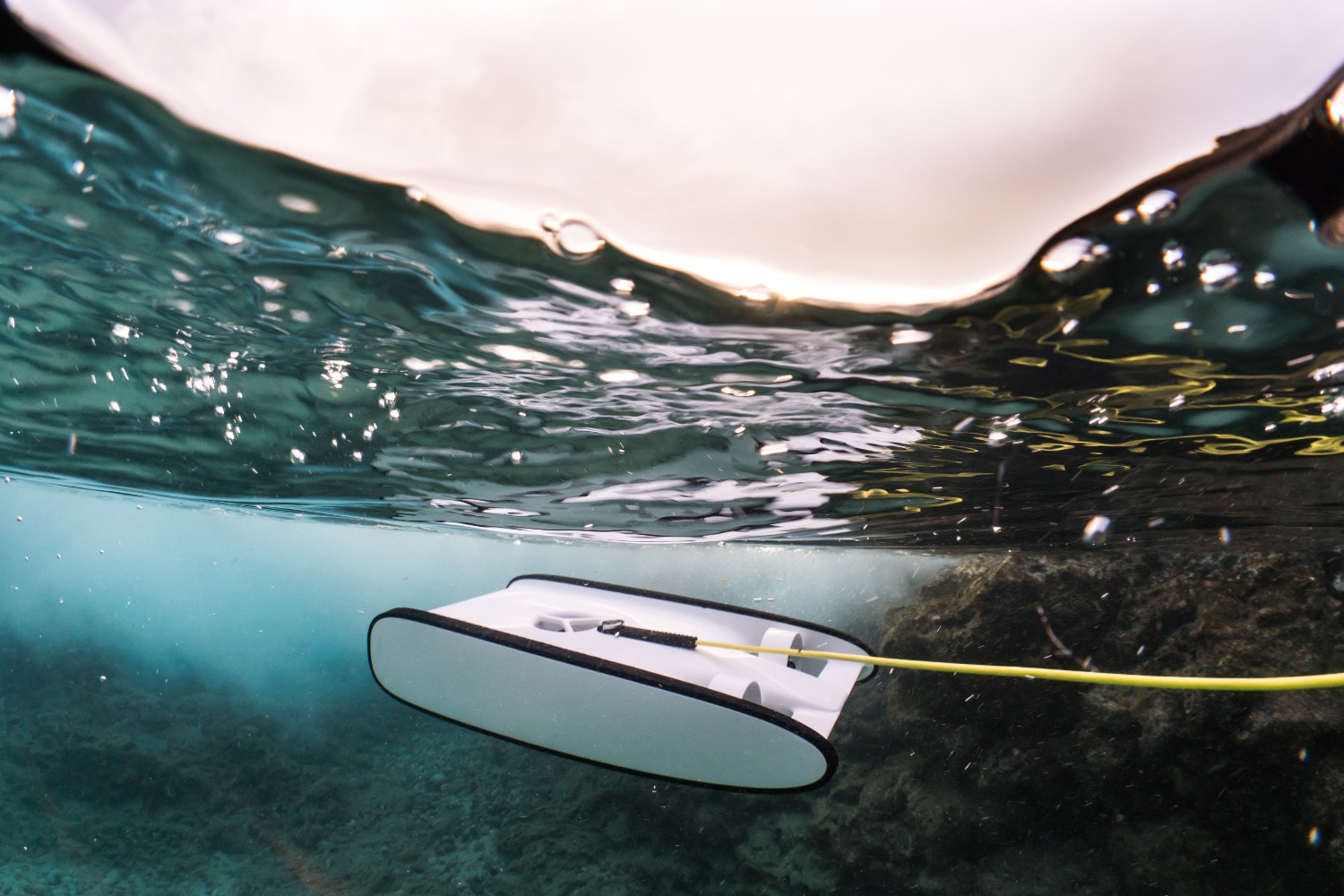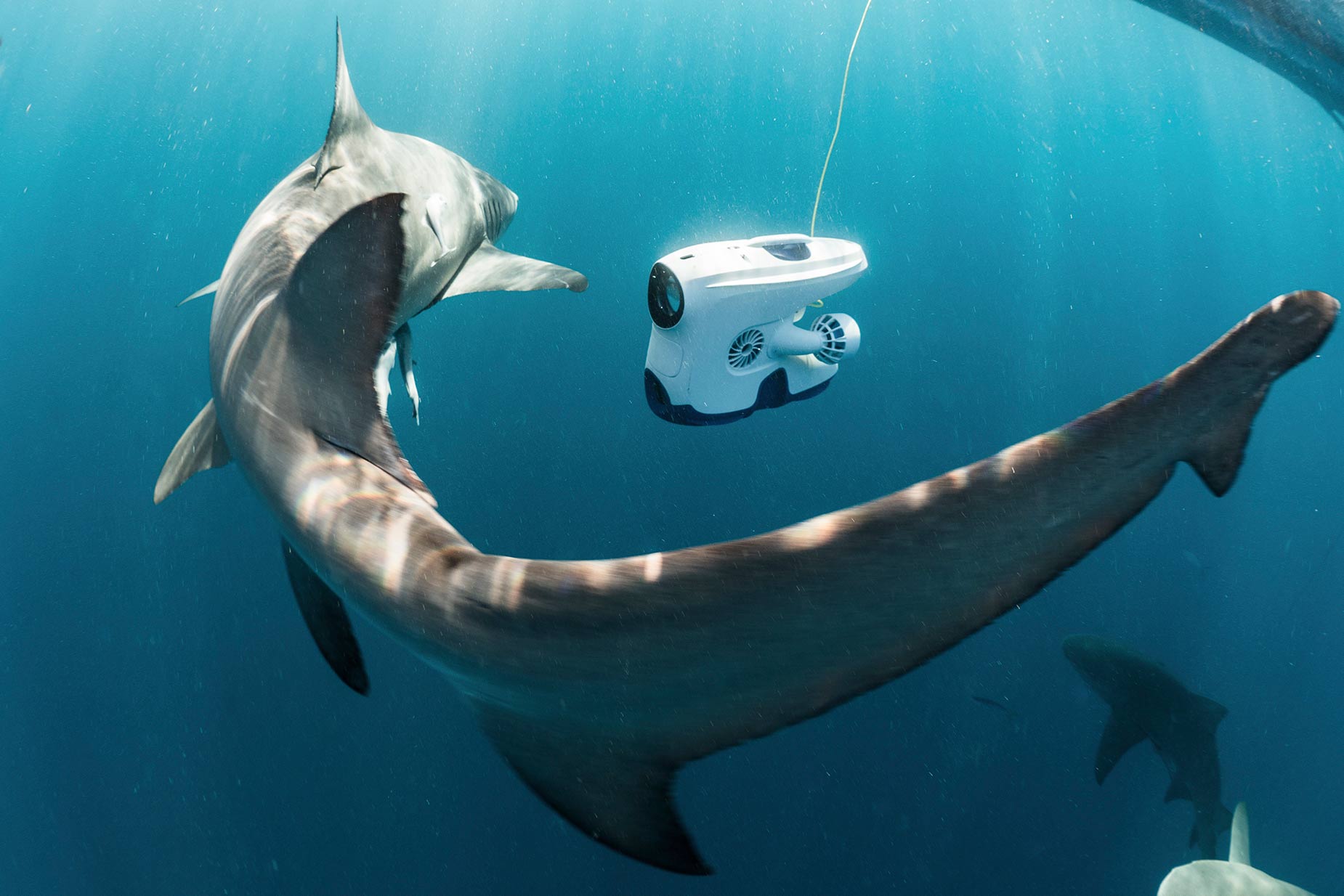The market for aerial drones may be reaching a plateau, but drone technology is continuing to expand into the weird, the wild and now the wet. This underwater drone revolution is already beginning thanks to a handful of pioneers who are willing to put in the research and development necessary to produce the first deep-diving drones, even if they do look a bit bizarre. One of our top choices is Power Vision PowerRay because not only is it a drone but also a very useful fish finder. Check out our list of the best underwater drones available currently for purchase or pre-order.
At a glance
| Product | Category |
| Power Vision PowerRay | Best for fishing |
| iBubble | Best for divers |
| Robosea BIKI | Best for casual hobbyists |
| Deep Trekker DTG2 | Best for exploring and working under the surface |
| Fathom ONE | Best for the world traveler |
| OpenROV | Best for no-frill exploration |
| Blueye Pioneer | Best for serious enthusiasts |
| Geneinno Titan | Best for capturing deep sea footage |
The best underwater drone for fishing: Power Vision PowerRay

Why should you buy this: A removable fish finder moves this underwater drone beyond a novelty and turns it into a useful tool for fishing
Who it’s for: Fishermen looking for the latest technology
How much will it cost: $1,488.00
Why we picked the Power Vision PowerRay:
The PowerRay from Power Vision is a fisherman’s best friend. The tethered drone is equipped with a removable PowerSeeker fish finder. The onboard sensors and sonar equipment of thievish finder drone provides detailed stats on the distribution of fish, underwater temperature, water depth and more. There’s even an optional fishhook holder so you can place your hook exactly where you have the highest chance of getting a bite.
Beyond fishing, the PowerRay has a 12-megapixel camera that is capable of streaming 1080P video from depths up to 98 feet and optional VR goggles that both immerse you into the underwater landscape and allow you to navigate using gestures. It runs for approximately four hours on a single charge.
The best underwater drone for divers: iBubble

Why should you buy this: It follows you automatically so you can enjoy your dive knowing the iBubble is recording everything you see
Who it’s for: Divers looking to record the beauty they see under the water
How much will it cost: $3,299.00 pre-order for Oct 2018 delivery
Why we picked the iBubble:
If you’re a diver, then you will love the features of the iBubble underwater drone. It’s allegedly capable of 100 percent autonomy and will follow you around as you swim underwater. Unlike similar submarine UAVs, the iBubble operates without a tether so you can swim freely and not worry about getting tangled up in a cord. You can control it using a bracelet on your wrist.
If you want to stay above the water and explore the area before diving, iBubble does include a tether with a remote control unit and live video through a connected smartphone. There are 8 individually controlled motors and obstacle avoidance technology that helps the UAV swim smoothly down to 200 feet for up to one hour. The iBubble does not include a camera, but you can drop in a compatible GoPro to record your diving footage.
The best underwater drone for casual hobbyists: Robosea BIKI

Why should you buy this: The relatively low price tag makes the BIKI an attractive starter model for those looking to experiment with underwater drones
Who it’s for: Early adopters who want to test submersible drones without a huge investment
How much will it cost: $799
Why we picked the:
The Robosea BIKI sets itself apart from its competitors with its unique fish-like design. The drone not only looks like a fish, it actually moves like a fish thanks to a motorized rubber tail fin. Not the fastest drone, the BIKI can glide through the water at a slow 1.12 MPH for up to 90 minutes. The BIKI is one of the few drones which can be controlled wirelessly underwater using a TV-style handheld remote or a smartphone app. Wireless signals don’t penetrate through water very well so you have to immerse the handheld remote and keep it within 33 feet of the drone or use the smartphone app to draw out the path before submerging.
Because of these limitations, the BIKI is best used in shallow waters, even though it can allegedly dive to 60 meters/200 feet deep. BIKI can record video using its 4K, 150-degree field of view video camera, but there is no live view. The drone has two 114 lumens LED lights and an image stabilization system to improve image quality.
The best underwater drone for exploring and working under the surface: Deep Trekker DTG2
Why should you buy this: Not a toy or a gimmick, the DTG2 is a full-featured underwater drone from an experienced ROV manufacturer.
Who it’s for: Drone operators who want reliability and quality construction from a manufacturer who already has proven its chops
How much will it cost: $3,899 and up
Why we picked the Deep Trekker DTG2:
Deep Trekker is known for its underwater security cameras and submersible pipe crawling drones, and this experience shows in the company’s DTG2 series of drones. Falling on the professional side and not the hobby side, the tethered DTG2 is available in four different models ranging in price from the $3,899 starter unit to the $9,500 worker model which includes onboard sensors and robotic arms.
The Deep Trekker DTG2 is powered by a patented propulsion system with two independently controlled, reversible motors that provides excellent maneuverability up to 150 meters/500 feet and speeds as high as 3 MPH. It also has an internal HD camera with a 330-degree field of view that delivers a live stream to an LCD-equipped handheld controller. An onboard battery delivers up to 8 hours maximum dive time.
The best underwater drone for the world traveler: Fathom ONE

Why should you buy this: The modular design of the Fathom One makes the underwater drone easy to pack in a bag and repair when it breaks
Who it’s for: People who want a submersible drone that packs for transport and is easy to assemble on site
How much will it cost: $999
Why we picked the Fathom ONE:
The Fathom One is designed for travel with a modular design that allows you to remove the thrusters for packing and re-attach them when needed. This modularity also means repairs to the underwater drone are easy — just buy a replacement thruster, pop out the broken one and click in the new one. The Fathom ONE uses an above ground WiFi module link that is tethered to the submersible and a smartphone app to control the drone up to 150 meters/500 feet below the surface. You can view a live stream video from the drone using the built-in 1080p camera. The battery provides up to 2 hours of run time with speeds up to 4 MPH.
The best underwater drone for no-frills exploration: OpenROV Trident

Why should you buy this: The OpenROV trident is a basic underwater drone that is extensible and can grow as your interest in underwater drones grows
Who it’s for: Early adopters who want an underwater drone that can support additional cameras or custom sensors
How much will it cost: $1,699 and up pre-order
Why we picked the OpenROV Trident:
The OpenROV Trident doesn’t have any gimmicky features. With 3 hours of runtime and speeds up to 4.5 MPH, there Trident is a solid underwater drone that is focused on subsurface exploration. You can submerge up to 330 feet and watch a live video feed on your smartphone or the optional $400 LCD-equipped controller. You also can capture 1080p video using the built-in camera.
OpenROV has built the Trident to be extensible allowing you to add on custom sensors or additional cameras. The drone is tethered to a buoyant WiFi module that is used for communication with the controller and with other sensors that are added to the drone. Pricing starts at $1,699 for a base model with a 25-meter tether.
The best underwater drone for the serious enthusiast: Blueye Pioneer
Why should you buy this: The Blueye Pioneer is top notch underwater drone with an equally top-notch price tag.
Who it’s for: Prosumers who want professional level underwater drone without extra bells and whistles they won’t use and all the features they will use
How much will it cost: $6,000 pre-order
Why we picked the Blueye Pioneer:
The Blueye Pioneer straddles the line between consumer underwater drone and professional level ROV. It’s price tag and hardware are professional level, but its feature set is squarely aimed at the underwater explorer. The drone ships with 4 thrusters and a stabilization system that provides excellent maneuverability and speeds up to 5.6 MPH even in rough waters.
A 75-meter cable tethers the drone to a surface WiFi transmitter that connects to a smartphone for control and a live video feed from below the surface. The video is provided by an integrated HD wide-angle video camera that color corrects for the deepwater environment. There also are two LEDs delivering 3,000 lumens of light to brighten the drone’s path which is needed as it dives down to a maximum 150 meters/500 feet. The Blueye Pioneer can operate for up to 2 hours on a single battery cycle.
The best underwater drone for capturing deep sea footage: Geneinno Titan

Why should you buy this: The Titan boasts of an outstanding camera system that is optimized for underwater footage
Who it’s for: Professionals and hobbyists who want to dabble in underwater drone photography
How much will it cost: $2,599
Why we picked the Geneinno Titan:
Geneinno advertises it’s recently launched Titan drone as a professional tool, but the sub-$3,000 price tag is not out of reach for hobbyists who don’t mind paying a bit extra for a high-quality underwater drone. For starters, the Titan has a 9-axis sensor and six thrusters — two horizontal and four vertical — for maneuverability and speed (up to 4.6MPH). An integrated 4K camera with a 160-degree wide angle lens captures both 4K UHD video and 8-megapixel stills. It also delivers a live 1080P video feed to a compatible tablet or smartphone.
The image quality is top notch thanks to color correction dive filters and a combined 3,000 lumen LEDs that’ll light up even the darkest water at the drone’s maximum 150 meter/500 foot depth. For navigation, the Geneinno Titan includes a Nintendo Switch-like controller that fits around a tablet or a phone. The base model ships with a 50M tether cable and a wireless transmitter, though you can upgrade the length of the tether and add other accessories if needed. Expect to get 4 hours of battery life out of a single charge.





